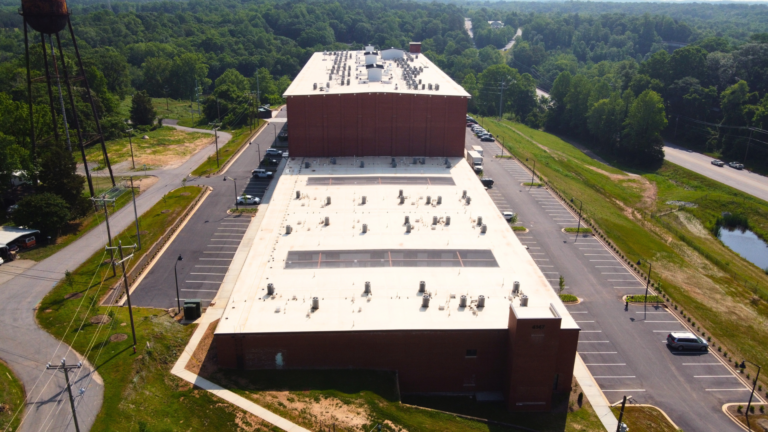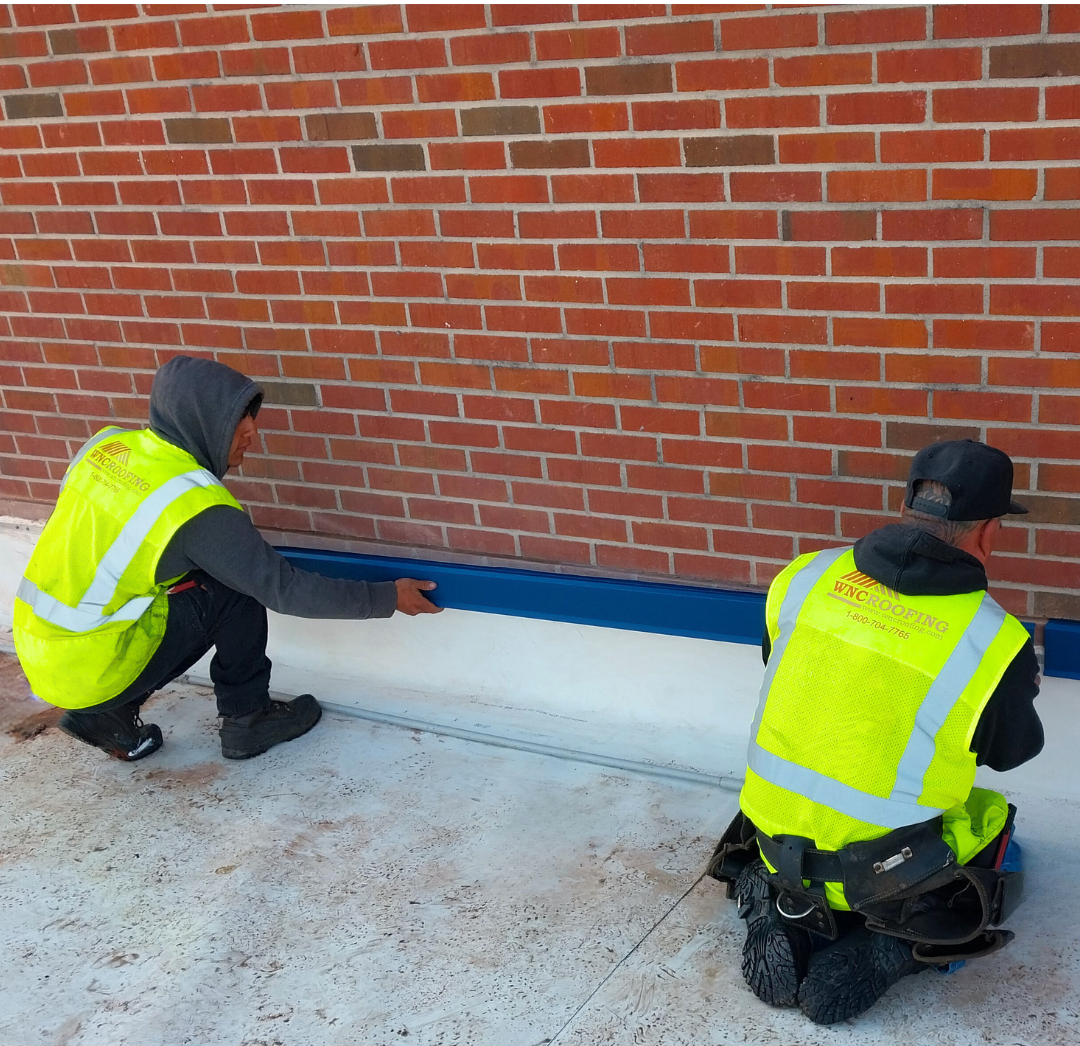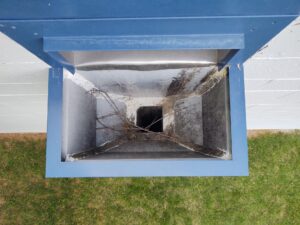Table of Contents
Intro To Roof Flashing
What is Roof Flashing?
Roof flashing is an essential component of any roofing system, designed to prevent water from penetrating vulnerable areas of the roof. It is typically made from a variety of materials such as metal, rubber, or liquid-applied compounds, and is installed at areas where the roof meets walls, chimneys, vents, valleys, skylights, and other openings. The primary function of flashing is to keep water out of these areas and into gutters or other drainage systems.
Without proper flashing, water can easily seep into the roof structure, leading to leaks, water damage, mold growth, and even structural decay. Flashing plays a critical role in maintaining the integrity of your roof and extending its lifespan.
In this blog, we’ll explore the different types of flashing damage, materials used, types of flashing, and when to repair or replace it. Whether you’re considering a roof replacement or maintenance, understanding flashing is key to protecting your property.
Most Common Kinds of Roof Flashing Damage
Roof flashing damage can result from a variety of factors. Here are some of the most common causes:
Weather Exposure: Harsh weather conditions like heavy rain, snow, hail, and strong winds can cause flashing to corrode, crack, or become dislodged over time.
Thermal Expansion and Contraction: Fluctuations in temperature can cause the roofing materials and flashing to expand and contract. This constant movement can loosen the flashing, fasteners, or create gaps.
Poor Installation: If flashing isn’t installed correctly, it can easily shift, warp, or fail to provide an adequate seal, leading to leaks and water damage.
Corrosion and Rust: Metal flashing, especially if not properly coated or maintained, can corrode or rust due to prolonged moisture exposure.
Physical Damage: Falling branches, foot traffic (from maintenance workers), or impacts from debris can bend, puncture, or displace roof flashing.
Aging Materials: Over time, even the most durable flashing materials degrade due to prolonged exposure to the elements.
Sealant Deterioration: The caulking or sealant used to secure flashing can dry out, crack, or peel away, allowing water to seep in.
Improper Repairs: DIY repairs or unprofessional patch jobs can leave flashing vulnerable if not done correctly, often leading to more significant issues.
Regular inspections and timely maintenance can help identify and address these issues before they lead to significant roof damage.
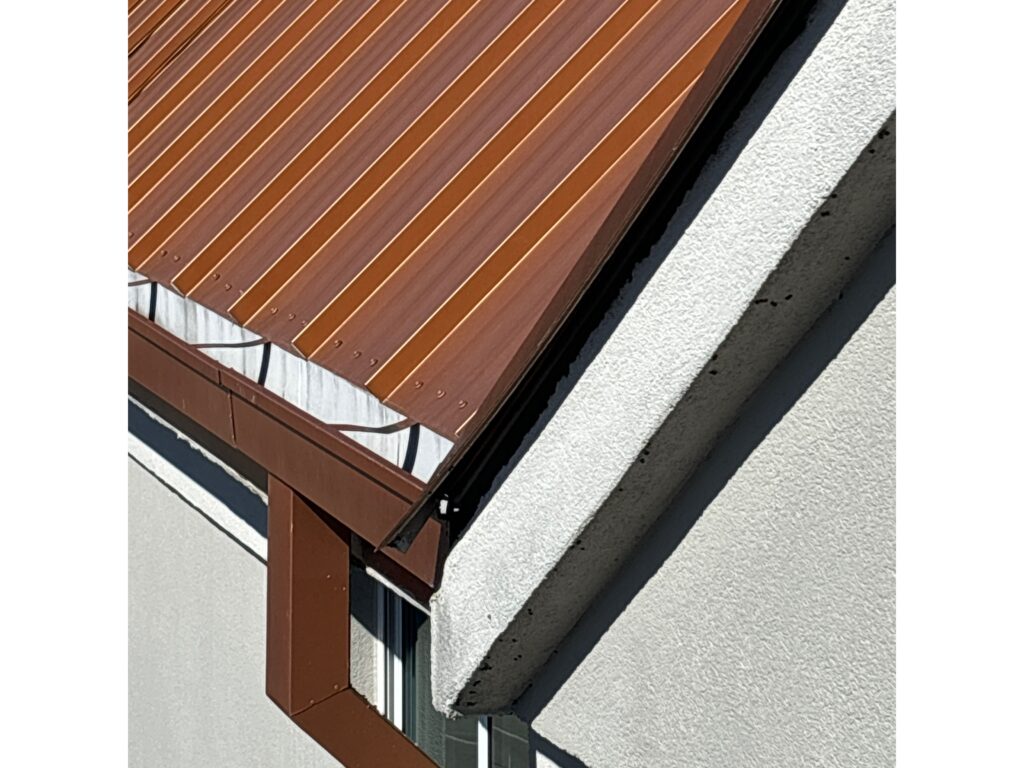
Roof Flashing vs Roof Edge Metal
The terms flashing and edge metal are often used interchangeably in roofing, but they serve distinct purposes and have key differences:
1. Flashing:
Purpose:
- Designed to prevent water from penetrating vulnerable areas of the roof, especially around joints, seams, and roof penetrations (like chimneys, vents, skylights, and walls).
Key Features:
- Function: Keep water away from openings or transitions where leaks are likely.
- Placement: Found around roof penetrations, valleys, walls, and other interruptions in the roof surface.
- Types: Step flashing, counter flashing, base flashing, vent pipe flashing, valley flashing, etc.
- Materials: Aluminum, galvanized steel, copper, lead, or membrane-compatible materials.
Example:
Flashing around a pipe vent prevents water from seeping into the space between the pipe and the hole cut for the pipe.
2. Edge Metal (or Perimeter Edge Metal):
Purpose:
- Installed along the roof perimeter to reinforce edges, guide water off the roof, and protect underlying materials from wind uplift and moisture.
Key Features:
- Function: Provides structural edge support, helps prevent wind damage, and directs water into gutters or away from the roof.
- Placement: Found at the roof’s edges—along eaves, rakes, and parapet walls.
- Types: Drip edge, gravel stop, coping caps, fascia trim.
- Materials: Typically metal (aluminum, galvanized steel, or stainless steel) with protective coatings to prevent corrosion.
Example:
Drip edge metal along the roof’s edge ensures water flows into the gutter rather than seeping into the fascia or under the roofing material.
Key Differences at a Glance
| Feature | Flashing | |
|---|---|---|
| Primary Role | Seals joints/penetrations to prevent leaks | |
| Location | Around chimneys, vents, valleys, walls | |
| Types | Step flashing, counter flashing, vent flashing | |
| Water Control | Keep water away from vulnerable areas | |
| Wind Resistance | Limited role |
| Feature | Edge Metal | |
|---|---|---|
| Primary Role | Protects and reinforces roof edges, directs water runoff | |
| Location | Along eaves, rakes, parapet walls | |
| Types | Drip edge, gravel stop, coping caps | |
| Water Control | Keeps water out of the roof edge | |
| Wind Resistance | Provides structural support against wind uplift |
When to Use Each:
- Flashing is critical for sealing vulnerable areas within the roof structure.
- Edge metal protects and secures the perimeter of the roof.
Both are essential for a watertight, long-lasting roofing system, so make sure they are installed properly and meet your facilities specific needs.
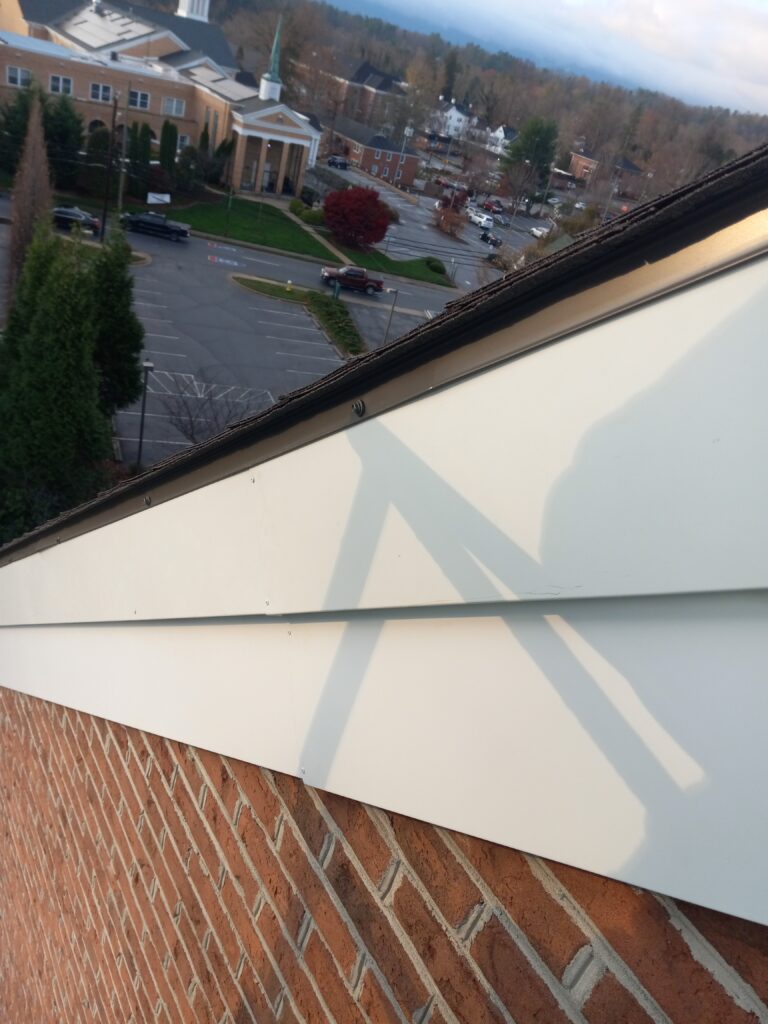
Types of Roof Flashing
There are several common types of roof flashing, each designed to protect specific areas of the roof where water might penetrate:
-
Step Flashing:
- Use: Around chimneys, skylights, and along roof-to-wall intersections.
- Design: L-shaped pieces installed in overlapping steps to direct water away from the wall.
-
Counter Flashing:
- Use: Over step flashing to provide an additional layer of protection, commonly used around chimneys.
- Design: Covers the top of base flashing.
-
Valley Flashing:
- Use: In the valleys where two roof slopes meet.
- Design: W-shaped or V-shaped metal that channels water down the roof safely.
-
Drip Edge Flashing:
- Use: Along roof edges (eaves and rakes) to guide water away from the fascia and into the gutters.
- Design: Thin metal strips that extend slightly beyond the roof edge.
-
Vent Pipe Flashing (Pipe Boot Flashing):
- Use: Around vent pipes or exhaust flues.
- Design: A cone-shaped piece with a wide base that fits snugly around the pipe penetration.
-
Chimney Flashing:
- Use: Around chimneys, typically a combination of step flashing, counter flashing, and base flashing.
- Design: Multi-part system for superior protection.
-
Skylight Flashing:
- Use: Around skylights to prevent leaks.
- Design: Custom or kit-based flashing designed to fit specific skylight models.
-
Kickout (Diverter) Flashing:
- Use: At the end of a wall where the roof meets a vertical wall, diverting water away from the siding and into the gutter.
- Design: Angled to direct water into gutters.
- Sealant Pockets:
- Use: To waterproof utility lines that go in and out of the building through the roof.
-
- Design: Lines are spaced apart according to specs and then filled with a sealant to waterproof.

Roof Flashing Material
Common Materials for Roof Flashing Include:
Aluminum:
- Pros: Lightweight, corrosion-resistant (when coated), easy to work with.
- Cons: Prone to corrosion if in contact with concrete or treated wood without proper coating.
Galvanized Steel:
- Pros: Strong, durable, and cost-effective.
- Cons: Can rust over time if the protective zinc coating wears off.
Copper:
- Pros: Extremely durable, corrosion-resistant, and aesthetically appealing.
- Cons: Expensive and can cause staining on some roofing materials.
Lead:
- Pros: Very malleable, long-lasting, and excellent at sealing irregular shapes.
- Cons: Expensive and has environmental/health concerns.
PVC or Rubber (Flexible Flashing):
- Pros: Flexible, ideal for irregular shapes, and resistant to corrosion.
- Cons: Less durable over time compared to metal options, especially in harsh weather conditions.
Stainless Steel:
- Pros: Extremely strong, corrosion-resistant, and long-lasting.
- Cons: More expensive and harder to work with due to its rigidity.
Choose the right type and material based on your climate, roof system, and budget. For example, coastal areas with salty air may benefit from copper or stainless steel due to their superior corrosion resistance.
Lifespan Of Roof Flashing Material
The lifespan of roof flashing depends on the material used, installation quality, and environmental conditions. Here’s a breakdown:
Average Lifespan by Material:
Aluminum Flashing:
- Lifespan: 20–30 years
Galvanized Steel Flashing:
- Lifespan: 15–25 years
Copper Flashing:
- Lifespan: 50+ years
Lead Flashing:
- Lifespan: 50–100 years
PVC or Rubber (Flexible Flashing):
- Lifespan: 10–30 years
Stainless Steel Flashing:
- Lifespan: 40–80 years
- Bituminous Flashing:
- Lifespan: 15-30 years
Factors Affecting Lifespan:
- Climate Exposure: Frequent freeze-thaw cycles, heavy rain, snow, or coastal salt air can shorten the lifespan.
- Installation Quality: Poorly installed flashing may fail prematurely, even if the material is durable.
- Roof Maintenance: Regular inspections and prompt repairs extend the life of flashing and your roof.
- Roof Material Lifespan: Flashing is often replaced when the roof itself is replaced to maintain watertight integrity.
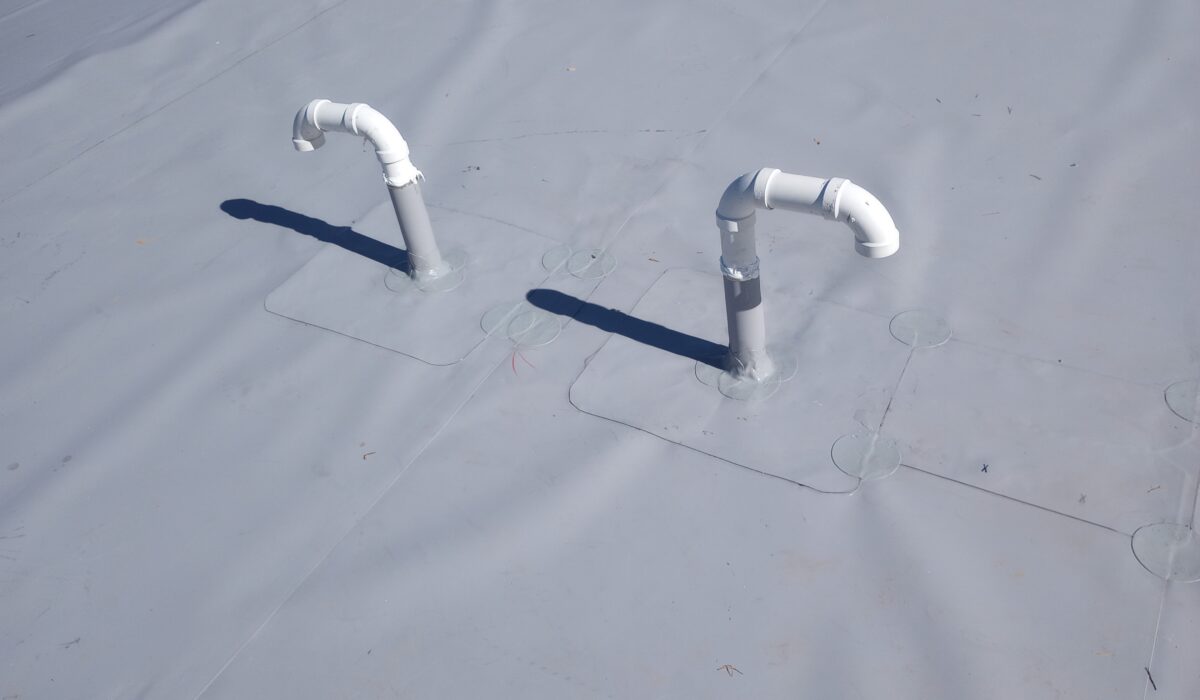
Flat Roof Flashing Types
On flat roofs, specific types of flashing are required to manage water drainage, since water doesn’t naturally run off as easily as on pitched roofs. Here are the flashing types critical to flat roofs:
1. Base Flashing (or Curb Flashing):
- Purpose: Installed at the joint where the roof deck meets vertical surfaces like walls, parapets, or rooftop equipment.
- Why It’s Unique to Flat Roofs: Flat roofs often have parapet walls, HVAC units, or skylight curbs that require sealing at the base to prevent water pooling and infiltration.
2. Counter Flashing:
- Purpose: Works in tandem with base flashing, covering its upper edge to create a watertight seal against vertical structures.
- Why It’s Important: It provides an additional barrier to keep water from getting into vertical surfaces like chimneys.
3. Edge Flashing (or Gravel Stop Flashing):
- Purpose: Installed along the roof perimeter to prevent water from dripping off the edges and to contain the roof membrane and any ballast like gravel.
- Why It’s Unique: While drip edge flashing is common on pitched roofs, flat roofs require a more robust edge system to handle water retention and protect the roof membrane, especially where ballast is present.
4. Scupper Flashing:
- Purpose: Used around roof scuppers that direct water into downspouts or drains.
- Why It’s Unique: Scuppers are drainage features specific to flat roofs, requiring custom flashing to prevent leaks around the openings in the wall.
5. Drain Flashing:
- Purpose: Seals around roof drains, which are crucial on flat roofs to prevent water pooling, as well as around any vent pipes.
- Why It’s Critical: Unlike sloped roofs where water drains off naturally, flat roofs rely heavily on internal drains (ideally with crickets and tapered insulation), making flashing around them vital for preventing leaks.
6. Pipe Boots:
- Purpose: Seals around vent pipes to prevent leaks.
- Why It’s Critical: Flat roofs tend to be large and have lots of pipe penetrations for the various utilities and vents.
Materials for Flat Roof Flashing:
- Metal: Aluminum, galvanized steel, or copper for durability.
- Membrane-Compatible Flashing: Often made from the same material as the roof membrane (like TPO, EPDM, or PVC) to ensure seamless integration and synced expansion and contraction rates.
- Liquid-Applied Flashing: Used for complex areas where sheet flashing won’t conform well.
Proper flashing on flat roofs is critical because any failure can lead to significant water pooling and interior damage to a business. Regular inspections are key to catching issues early and preventing business disruptions and losses.
Liquid Flashing vs Metal Flashing
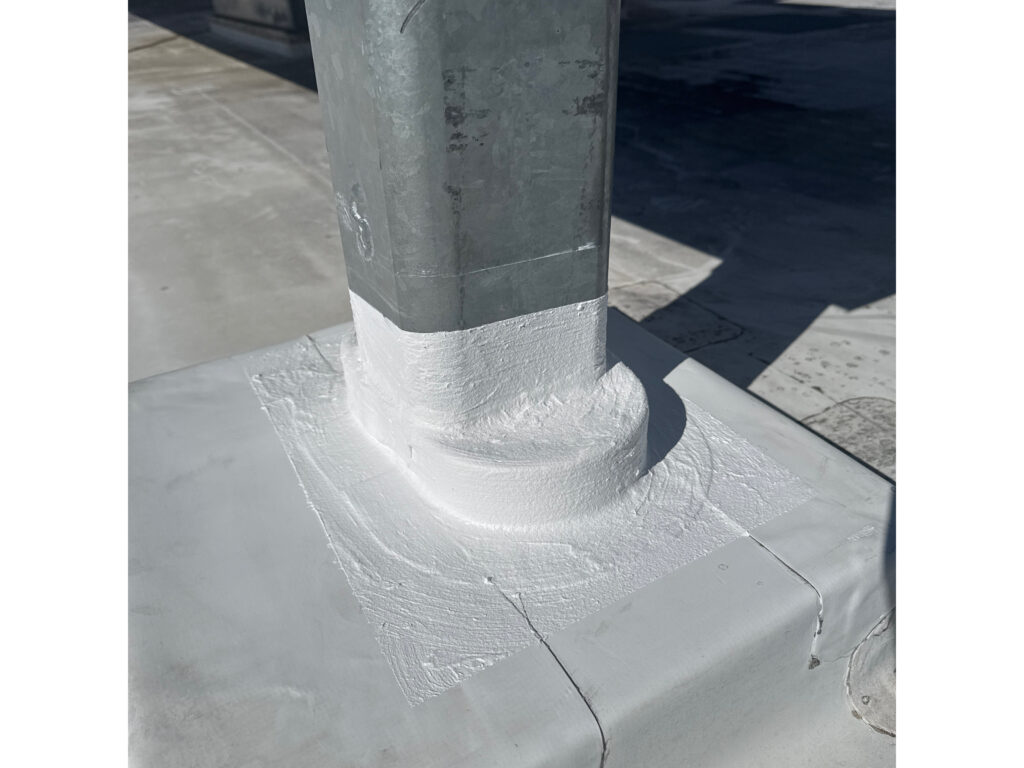
1. Liquid Flashing (Liquid-Applied Flashing)
What It Is:
A fluid, typically made of polyurethane, silicone, or acrylic-based compounds, that’s applied with a brush, roller, or trowel. It cures to form a seamless, flexible, and waterproof membrane.
✅ Pros:
- Seamless Application: No joints or seams where water can seep through, reducing leak risks.
- Flexible: Excellent for irregular shapes, complex penetrations, and hard-to-reach areas.
- Adhesion: Bonds directly to a wide range of surfaces, including metal, concrete, wood, and membranes.
- Durability: Resistant to UV rays, chemicals, and extreme temperatures (especially high-quality formulations).
- Quick Repairs: Ideal for quick fixes and detailing work without removing existing materials.
❌ Cons:
- Application Sensitivity: Requires proper surface preparation (clean, dry, and primed surfaces) for optimal adhesion.
- Curing Time: Needs time to cure fully, which can be delayed by cold or wet conditions.
- Skill Requirement: While easy for small repairs, large-scale applications need skilled labor to ensure even and manufacture specified thickness and coverage.
- Cost: High-quality liquid flashing materials can be more expensive per square foot than traditional flashing.
2. Traditional Flashing (Sheet Metal Flashing)
What It Is:
Rigid materials like aluminum, galvanized steel, copper, or lead that are cut and shaped to fit around roof penetrations, valleys, and edges.
✅ Pros:
- Durability: Long-lasting, especially materials like copper or stainless steel.
- Structural Integrity: Provides robust protection against wind uplift and physical damage.
- Proven Performance: A time-tested solution for both residential and commercial roofing systems.
- Resistant to UV and Weather: Metal doesn’t degrade from UV exposure and handles harsh weather well.
❌ Cons:
- Seams and Joints: Multiple pieces create seams that can be vulnerable to water intrusion if not sealed properly and maintained.
- Rigid: Not ideal for irregular shapes or tight spaces without custom fabrication.
- Corrosion Risks: Some metals (like galvanized steel) can rust over time if coatings fail, especially in coastal environments.
- Installation Complexity: Requires cutting, bending, and fastening, which can be labor-intensive and needs skilled installers.
Liquid Flashing vs. Metal Flashing: Quick Comparison
| Feature | Liquid Flashing | |
|---|---|---|
| Application | Applied with brush, roller, or trowel | |
| Seamless? | Yes, fully seamless | |
| Best For | Irregular shapes, small details, repairs | |
| Flexibility | Varies (depends on the product used) | |
| Durability | 10–20+ years depending on product | |
| UV Resistance | Varies (depends on the products specifications) | |
| Cost | Higher for materials, lower for labor (small areas) | |
| Maintenance | May need recoating over time |
| Feature | Metal Flashing | |
|---|---|---|
| Application | Installed as pre-cut or custom-shaped metal sheets | |
| Seamless? | No, multiple seams that require sealing | |
| Best For | Straight edges, roof perimeters, chimneys, valleys | |
| Flexibility | Rigid, limited flexibility without custom work | |
| Durability | 20–50+ years depending on material | |
| UV Resistance | Excellent (especially metals like copper or steel) | |
| Cost | Varies based on metal type and installation/roof complexity | |
| Maintenance | Requires regular inspections for corrosion or sealant failure |
Which Should You Choose?
- Liquid Flashing: Great for detailed work, irregular surfaces, and quick repairs—common in flat roofs and modern waterproofing systems.
- Traditional Flashing: Ideal for large-scale roofing projects, roof edges, chimneys, and areas exposed to physical stress.
In many cases, roofing systems use both types together to maximize durability and waterproofing.
When to Repair or Replace Your Flashing
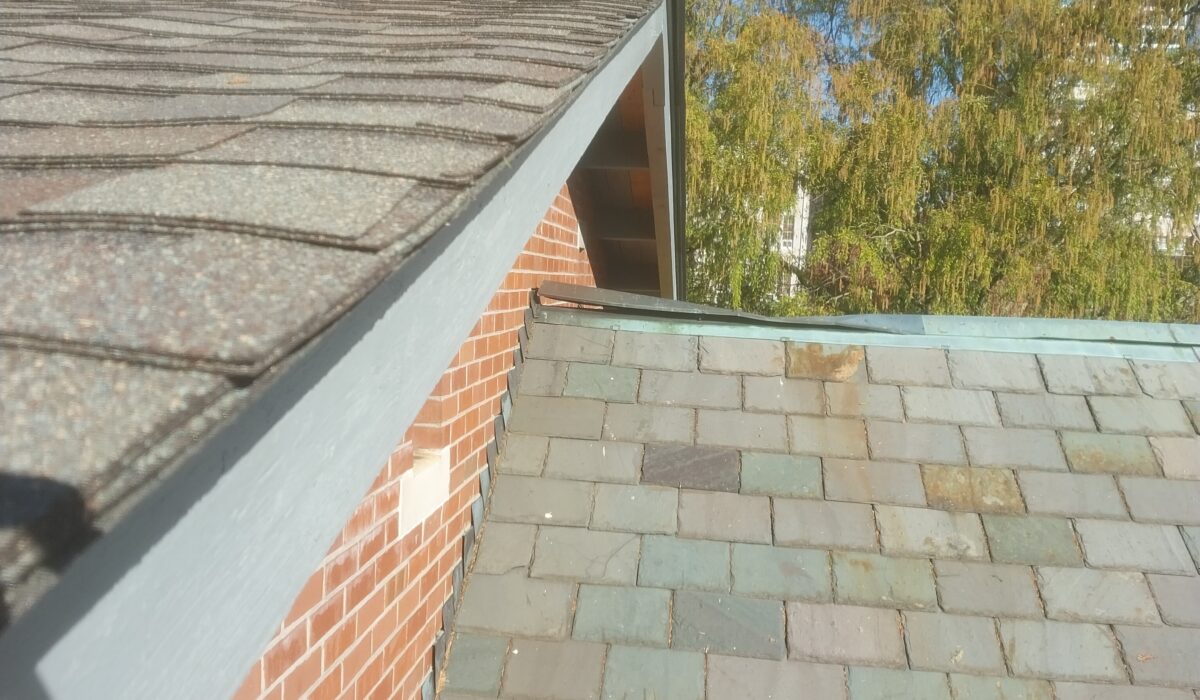
When to Repair Flashing:
Flashing is a critical component of your roof’s waterproofing system, and it’s essential to repair flashing as soon as signs of damage or wear appear. Ignoring issues with flashing can lead to leaks, water damage, and costly repairs. Here are key situations when you should consider repairing flashing:
1. Visible Damage or Deterioration
- Signs: Cracks, holes, rust, or visible gaps in the flashing.
2. Leaks Inside Building
- Signs: Water stains on ceilings, walls, or around roof penetrations.
3. Loose or Missing Flashing
- Signs: Flashing that is no longer securely fastened or completely missing.
4. Age of the Flashing
- Signs: Flashing that’s showing signs of aging (discoloration, brittleness, or cracked sealant).
5. Worn or Cracked Sealant
- Signs: Sealant around flashing is cracked, peeling, or missing in areas.
6. Uneven or Poor Installation
- Signs: Flashing that looks improperly aligned or poorly installed.
7. After Severe Weather
- Signs: Storms, high winds, hail, or heavy snow.
8. Visible Mold or Moss Growth
- Signs: Moss, algae, or mold growing around flashing areas indicating trapped moisture.
Key Takeaways:
Repairing flashing promptly is essential for maintaining the structural integrity of your roof and protecting your home from water damage. Regular roof inspections (at least once a year) can help catch flashing issues early before they become more serious and costly to repair. If you’re unsure about the condition of your flashing, it’s always a good idea to consult a professional roofing contractor to assess and repair the damage
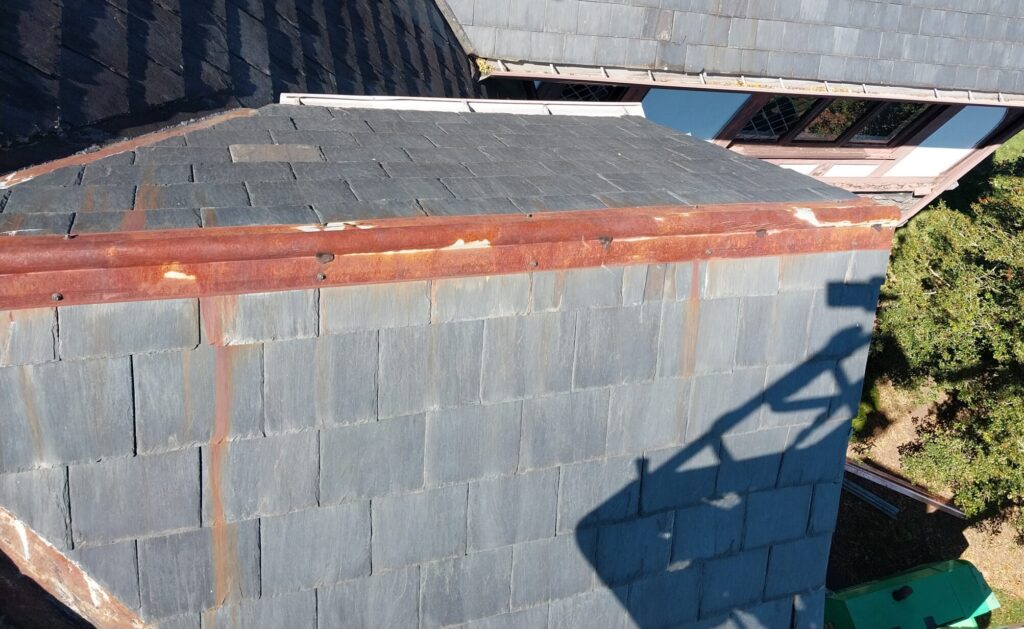
When to Replace Flashing:
While repairing flashing can extend its life in some cases, there are situations when flashing needs to be replaced entirely to maintain the integrity of your roof. Here are the key signs that indicate it’s time to replace flashing:
1. Extensive Corrosion or Rusting
- Signs: Visible rust, severe pitting, or crumbling metal.
2. Cracked or Deteriorated Flashing
- Signs: Large cracks, breaks, or brittleness, especially in materials like lead, aluminum, or rubber flashing.
3. Severe Water Leaks or Stains Inside Facility
- Signs: Persistent water stains on ceilings, walls, or near roof penetrations.
4. Age of the Flashing (Beyond Its Expected Lifespan)
- Signs: Flashing that is more than 20–30 years old (probably also time to replace your roof)
5. Severe Physical Damage from Storms or High Winds
- Signs: Flashing that has been bent, detached, or displaced by strong winds and precipitation after a severe weather event.
6. Worn-Out or Failed Sealant
- Signs: Sealant around the flashing is dried out, cracked, or missing entirely, allowing gaps.
7. Visible Moss, Algae, or Mold Growth Around Flashing
- Signs: Mold, mildew, or moss forming around flashing areas, especially in flat roof areas.
8. Improper Installation or Flashing that Wasn’t Done Right
- Signs: Flashing that is misaligned, poorly overlapping, or doesn’t match the roof’s needs and leaks.
9. Frequent or Costly Repairs
- Signs: Flashing requires frequent repairs or band-aid fixes, and repair costs keep adding up.
Key Takeaways:
- If flashing is damaged beyond repair or too old to perform its function effectively, it should be replaced.
- Visible corrosion, cracks, displacement, and persistent leaks are clear signs that flashing replacement is needed.
- Regular inspections can help identify these issues early, allowing you to replace flashing before significant water damage occurs.
Replacing flashing is an investment in your roof’s longevity and the protection of your facility. If you’re unsure whether your flashing needs to be replaced, it’s always a good idea to consult a professional commercial roofing contractor to assess the situation.
Pro Tip: It’s often more cost-effective to replace flashing during a roof replacement rather than as a separate project. It will cost more on the front end but will be cheaper than doing it separately and it will provide a full roofing system that will age well together.
Conclusion
Roof Flashing is a key part to your facilities roof system. It can also be the main culprit when a leak is found. Take care of your roof with regular roof maintenance and timely repairs when leaks or visible damage is noticed. Don’t wait for small problems to become costly issues. Also, Make sure on commercial roofs to have all your penetrations professionally and properly flashed to ensure a leak free roof for years to come.
